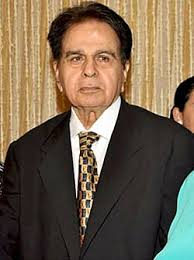Dilip Kumar: An Icon of Indian Film Industry

Introduction
Dilip Kumar, often referred to as the ‘Tragedy King’ of Indian cinema, is a name synonymous with acting excellence and has left an indelible mark on the film industry. Born on December 11, 1922, in Peshawar, Pakistan, his influence transcends mere entertainment; he shaped the discourse around acting in India for generations. His dynamic roles in the golden age of Bollywood, particularly in films like ‘Devdas’ and ‘Mughal-e-Azam,’ have not only entertained audiences but also showcased the depth and versatility required in acting. As the film industry evolves with new talent, Kumar’s legacy remains relevant, emphasizing the importance of understanding cinematic history.
Career Highlights
Dilip Kumar made his film debut in 1944 with ‘Jwar Bhata,’ but it was his performance in ‘Shaheed’ (1948) that truly established him as a prominent actor. Over the next few decades, he starred in numerous iconic films, including ‘Aan’ (1952), ‘Naya Daur’ (1957), and ‘Ganga Jumna’ (1961), which not only received critical acclaim but also brought in massive box office success. With his nuanced performances, Kumar brought to life complex characters that often resonated with societal issues, making him a relatable figure for many viewers.
Legacy and Recognition
Throughout his career, Kumar has received numerous accolades that highlight his contributions to arts. He was the first actor to receive a Filmfare Award and has won several throughout his lifetime, including the prestigious Dadasaheb Phalke Award in 1994 for his lifetime achievement. In addition, Kumar was also honored with the Padma Bhushan and Padma Vibhushan, two of India’s highest civilian awards, reflecting his impact on Indian culture.
Recent Developments
Despite his passing on July 7, 2021, the legacy of Dilip Kumar continues to thrive. Recently, a biopic detailing his illustrious career and personal life has been announced, sparking interest among both older fans and newcomers interested in classic Indian cinema. His remarkable journey has inspired exhibits at film festivals, and various tributes have surfaced on social media, celebrating his contribution and influence.
Conclusion
Dilip Kumar’s role in shaping Indian cinema cannot be overstated. As new stars emerge, his craftsmanship serves as a fundamental reference point for aspiring actors and filmmakers. Understanding his work and the themes he explored allows audiences today to appreciate the evolution of cinema in India. Kumar’s art transcends time, establishing him as a true icon whose legacy will endure beyond his years.









